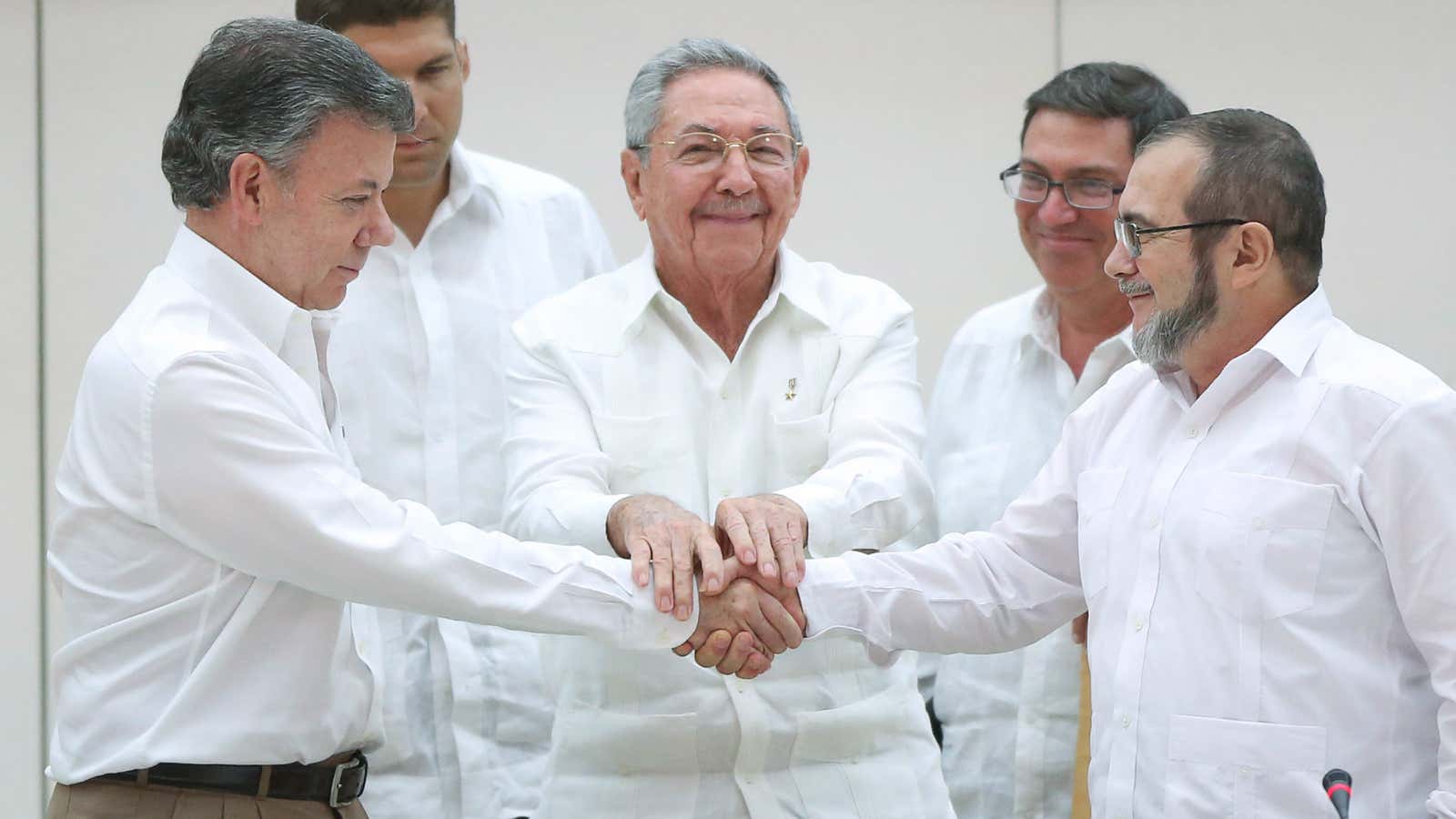One of the world’s longest-running conflicts made a historic step toward peace this week. As Cuba’s president Raul Castro watched, Colombian president Juan Manuel Santos shook hands in Havana with Farc rebel leader Rodrigo Londono, better known by his nom de guerre, Timochenko. “The time for peace has arrived,” Santos said.
The two agreed to sign a final peace treaty by March 23, 2016 to end a 51-year battle between the Revolutionary Armed Forces of Colombia’s leftist rebels, the Colombian government, and right-wing paramilitaries. The conflict has killed more than 220,000.
The deal follows a breakthrough in three-year long peace talks hosted by Cuba that stalled over disagreement on amnesty for Farc combatants. The two sides ultimately agreed to grant amnesty to all rebels save those accused of war crimes or human-rights violations—a move that angered many Colombians appalled by the group’s violent tactics.
The fighting has driven more than six million Colombians from their home, putting the conflict second to Syria—which only begun in 2011—in numbers of displaced persons.
Farc emerged in 1964 from a Marxist-inspired revolt over land reform. The force grew to a peak of 17,000 fighters, fueled largely by proceeds from the illegal drug trade, kidnapping, and extortion. In 2006, the US Justice Department estimated that Farc produced 50% of the world’s cocaine.
Now an estimated 8,000-strong, the group is classified as a terrorist organization by the US and EU.
